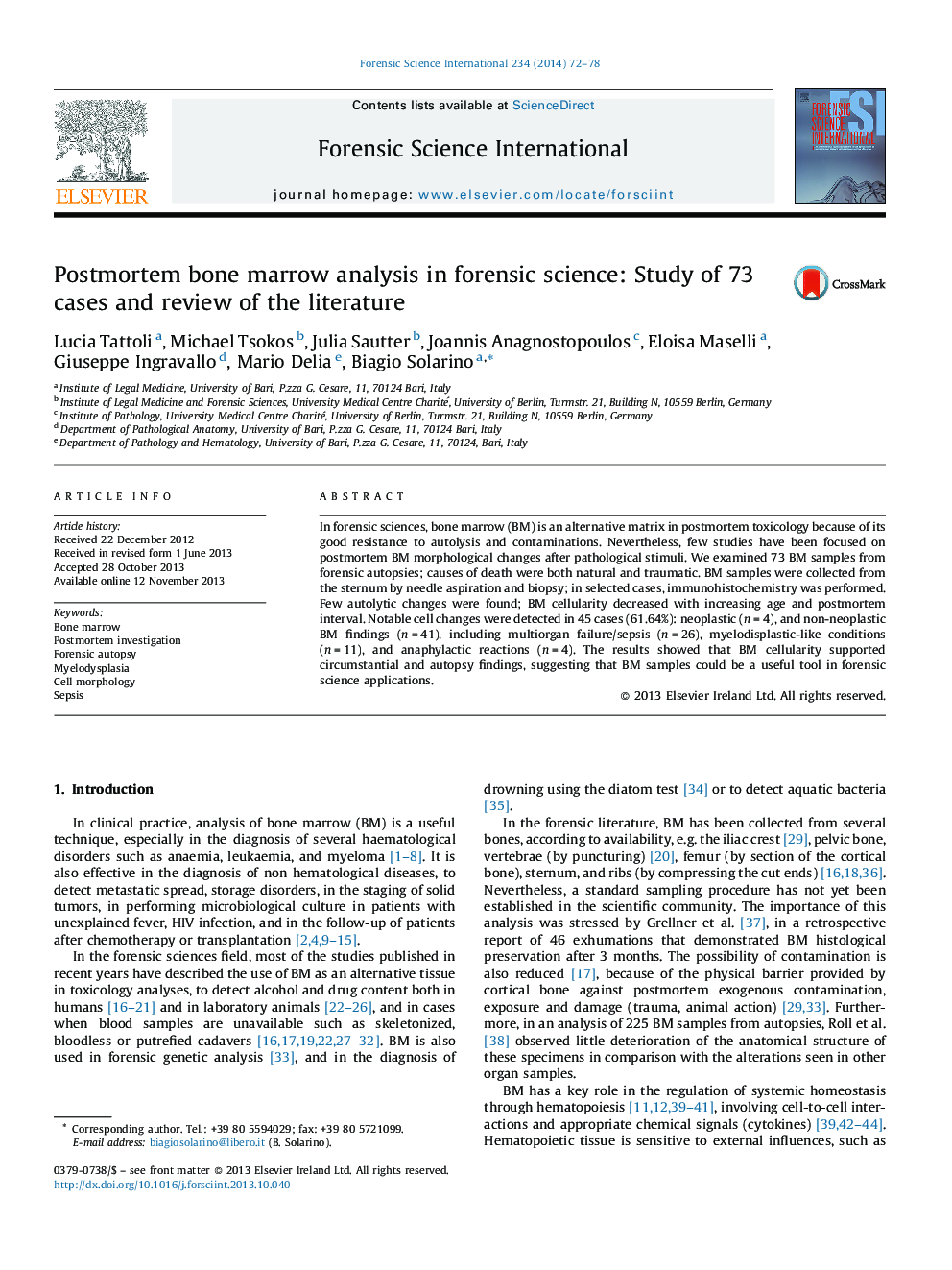| Article ID | Journal | Published Year | Pages | File Type |
|---|---|---|---|---|
| 6552598 | Forensic Science International | 2014 | 7 Pages |
Abstract
In forensic sciences, bone marrow (BM) is an alternative matrix in postmortem toxicology because of its good resistance to autolysis and contaminations. Nevertheless, few studies have been focused on postmortem BM morphological changes after pathological stimuli. We examined 73 BM samples from forensic autopsies; causes of death were both natural and traumatic. BM samples were collected from the sternum by needle aspiration and biopsy; in selected cases, immunohistochemistry was performed. Few autolytic changes were found; BM cellularity decreased with increasing age and postmortem interval. Notable cell changes were detected in 45 cases (61.64%): neoplastic (n = 4), and non-neoplastic BM findings (n = 41), including multiorgan failure/sepsis (n = 26), myelodisplastic-like conditions (n = 11), and anaphylactic reactions (n = 4). The results showed that BM cellularity supported circumstantial and autopsy findings, suggesting that BM samples could be a useful tool in forensic science applications.
Related Topics
Physical Sciences and Engineering
Chemistry
Analytical Chemistry
Authors
Lucia Tattoli, Michael Tsokos, Julia Sautter, Joannis Anagnostopoulos, Eloisa Maselli, Giuseppe Ingravallo, Mario Delia, Biagio Solarino,
